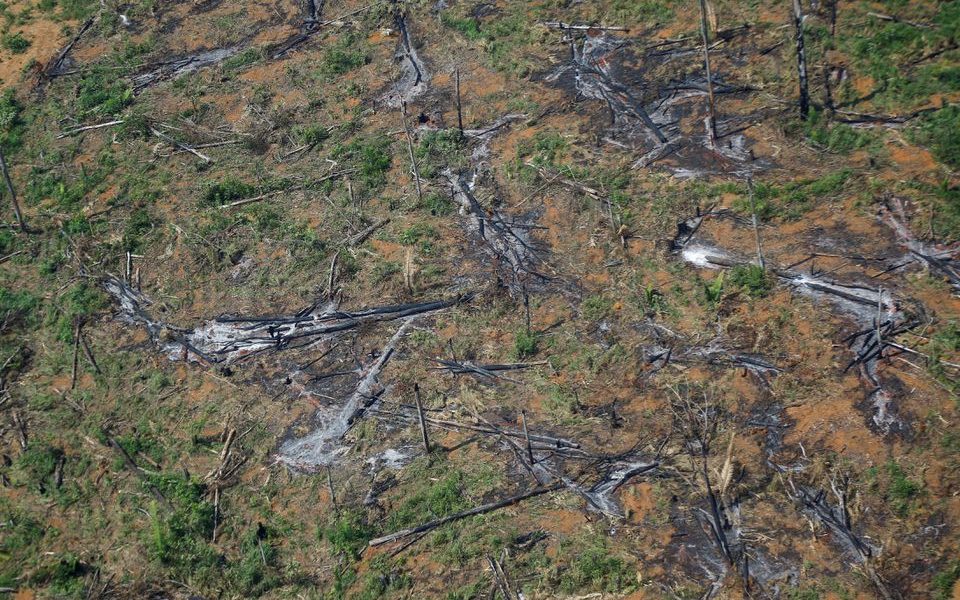11 Dec 2024

Tired Earth
By The Editorial Board

The true extent of illegal operations in the forest sector is difficult to ascertain with precision.
What is known is that large-scale agriculture and forestry operations are responsible for more than 70% of deforestation.
Those include timber cutting, cattle raising and feed production, pulp and paper production, and the use of bioenergy or biofuels made from unsustainable sources. Land speculation is also a problem.
Deforestation, primarily in tropical regions, is responsible for approximately 5 billion tons of CO2 emissions annually, accounting for nearly 15% of global CO2 emissions in 2020.
Separate from the role of tropical deforestation as a major CO2 emission source, forests hold a vast wealth of biodiversity that sustains local and global economies and absorbs and stores billions of tons of CO2 from the atmosphere each year that would otherwise add to global warming and ocean acidification.
Without this carbon sink, we would already be experiencing the runaway climate change that we are now aiming to avert.
However, rather than investing in the preservation of tropical forests, private investment is largely directed toward forest conversion for commodity production, or land speculation based on commodity production value.
The resulting deforestation ultimately leads to well-documented economic impacts, as well as human rights impacts on local communities and indigenous peoples.
Efforts to restrict imports of commodities linked with deforestation have expanded during the past decade. These include the European Union’s Timber Regulation and Forest Law Enforcement, Governance and Trade Action Plan, the high-profile Lacey Act enforcement actions in the United States, and laws to combat illegal timber imports in Japan, China, South Korea, and Australia.
However, less progress has been made on the underlying structural and political challenges that handicap efforts to decouple food production from deforestation and forest degradation, and that are characterized by a heavily inter-related set of market and regulatory challenges in producer and consumer countries.
Conventional agricultural commodity markets have failed to establish norms with respect to environmental and social impacts of production, a failure further enabled by lack of demand for ‘deforestation free’ products from emerging markets like China, India, and the Middle East and North Africa.
In producer countries, the absence of robust enforcement, prosecution, and punishment for flagrant illegal practices - including impunity for illegal deforestation and its financing, acceptance of prevalent corruption, and subsidies that incentivize forest conversion - are enabling rapid land speculation and forest loss.
In importing countries in the EU, and in the US and UK, import policies requiring proof of sustainability or zero-deforestation in production systems do not typically capture challenges related to deforestation legally authorized by producer countries, and lag in other major importing countries, such as China and India.
The proportion of key import markets moving towards sustainable practices is currently small and we risk the further emergence of ‘two-tier’ supply chains, where supply chain companies exposed to sustainability-linked risk relocate their procurement away from the deforestation frontier, with the ‘risky’ supply being absorbed by companies selling into markets with less focus on sustainability.
This disincentivizes action to end the expansion of active deforestation frontiers on the part of leading companies and ultimately results in little to no reduction in threat to forest areas. Finding opportunities to recognize and reward interventions and action in high-risk areas is therefore crucial.
Some leading companies like Nestle have made newly plausible implementation commitments to deliver on deforestation-free commitments much earlier than 2030. But these are exceptions, and their examples will not automatically leverage the whole sector without substantial new investment to accelerate the field.
Some of the ways deforestation can be tackled include scaling up support for free, open access platforms that link up deforestation alerts with supply chains and provide enhanced information on indirect suppliers and smallholder farmers.
This, along with support for consumer advocacy for industry transformation towards sustainable sourcing for major impact commodities in key underserved markets like Brazil, Korea, Japan, China, and India could strengthen demand for deforestation-free products.
Another tactic would be to develop and build out a network of practical pilot approaches in identified high-risk geographies, aligned with corporate and local governance priorities, that demonstrate the business case for investment in at-risk frontiers, including contributions to zero-net emissions targets.
In some countries, financial regulators are increasingly insisting upon climate-related disclosures. To date, these have not focused much on land-use related investments, but they could and should.
There are also growing discussions about the potential removal of “perverse subsidies” that stimulate deforestation-inducing agricultural expansion, rather than productivity-enhancing agricultural intensification.
These deforestation drivers are also major drivers of rural conflict and violations of indigenous and community rights. Adequate progress in reducing greenhouse gas emissions from land use will not occur without eliminating deforestation and rights abuses from forest risk commodity production, trade, consumption, and finance.
Source : news.trust.org
Comment